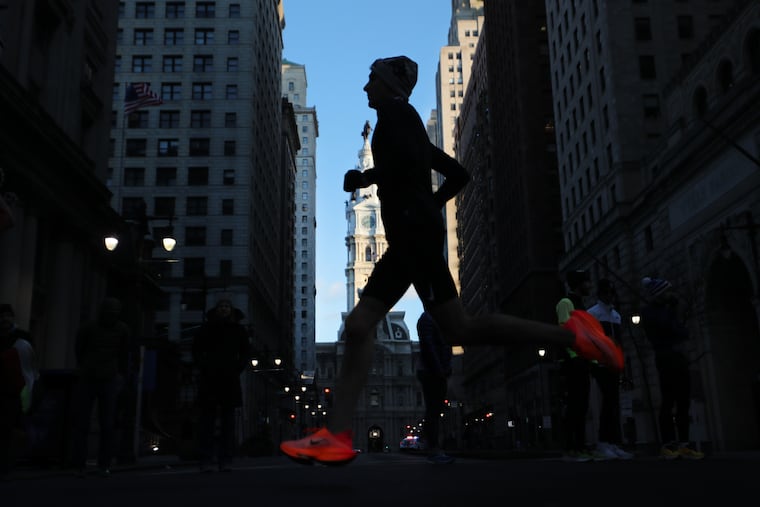Philly marathoners tend to ramp up their training in early September, but this week? Maybe try to cool it.
Same goes for entrants in the 13.1-mile Philadelphia Distance Run, scheduled for Sept. 17, a Penn Medicine physician says.

Participants in the Philadelphia Marathon tend to ramp up their training every year in early September, with the 26.2-mile race less than three months away.
And entrants in another big upcoming race, the 13.1-mile Philadelphia Distance Run on Sept. 17, have been training hard for months.
But with the unusually steamy conditions this week, both groups of runners — just like everyone else — should take it easier than usual.
That’s the advice of Penn Medicine physician John Vasudevan, a specialist in rehabilitation medicine and a longtime adviser to race organizers in the Philadelphia area.
This week might be a good time to work on strengthening exercises and other types of indoor cross-training, he said Wednesday, when temperatures remained above 90 degrees through late afternoon.
“This is a perfect day to say, ‘Listen, today is not a day I have to be outside,’” he said.
Public health experts are most concerned about the elderly and other medically vulnerable populations when the weather is extreme. This week was no exception, even though conditions fell short of the city’s official threshold for a heat emergency.
But experienced runners can also put their health at risk in this kind of heat, partly because they can’t always tell when they are overdoing it, said Vasudevan, director of the Penn Medicine Running and Endurance Sports Program.
“It’s really hard to know when you’re pushing your body too far, until you know what your body can accommodate on a normal day,” he said.
1%, 2%, 3%: Rules for running in the heat
Vasudevan said this week’s heat is not so extreme that people absolutely can’t run outside. But if they choose to do so, they need to keep an eye on two critical benchmarks: heart rate and hydration.
Runners should be sure their heart rate doesn’t increase any more than it does in normal weather conditions, he said. That may mean they need to run more slowly than usual, or cover a shorter distance.
And to make sure they are drinking enough water, runners can look at the color of their urine, he said. (Clear is good. Dark yellow is a warning sign.) Or they can weigh themselves before and after a run, as any change in body weight comes in the form of water loss.
If runners lose less than 1% of their body weight during a run, that means they are adequately hydrated. But if they lose 2%, that means various bodily functions are starting to come under increased strain.
“You may not be overtly ill,” he said, “but you already are losing performance.”
The danger zone comes at 3%, where the heart, brain and other organs can malfunction, he said.
Vasudevan acknowledged that runners can be a stubborn breed, determined to get their miles in no matter what the conditions. He just wants them to do it safely.
“It’s rare that I tell a runner not to run,” he said. “This is just a reminder than in this extreme kind of weather, it’s not a matter of what you do. It’s how you do it.”